On June 18th, 2018 Garmin released the Fenix 5 Plus, Fenix 5S Plus, and the Fenix 5X Plus to the world. These watches arrived a little over a year after their counterparts (the Fenix 5, 5S, and 5X) and are improvements in every respect except for price.
For those who follow All Day Ruckoff on Twitter you might remember that roughly 3 months ago my Fenix 5X fell off while out adventuring and was never recovered. After searching for it on multiple occasions I chalked it up as lost and went back to my Fenix 3HR which is still an incredible watch.
Fast forward to Monday, June 18th and Garmin announces that the “Plus” line of Fenix 5 watches are being released. I briefly looked them over then made the decision to place an order for a Fenix 5X Plus. Two days later that watch was in hand. The main reason why I pulled the trigger boils down to the battery life on the Fenix 5X Plus… but we’ll get into that soon.
If you are not familiar with the Fenix line of watches they are Garmin’s line for “athletes and outdoor adventurers” or at least that’s what their marketing team says. That’s a very broad statement but the major selling points on them are their ruggedness, GPS capabilities, and map navigation features. When I still had the Fenix 5X I put hundreds of workouts on it and it still looked brand new… that thing was truly a work of art. The GPS on my old Fenix 5X was very capable and the sleep tracking, step counting, stress tracking, and heart rate tracking are all great additions.
Just a note on GPS watches… you absolutely do not need a GPS watch or one this expensive to track your rucks and train for GORUCK events. There’s plenty of free phone apps (Strava or Endomondo) and much cheaper GPS watch alternatives. The important thing when it comes to GPS watches is that you find one that’s waterproof. Most of them are at this point but it’s definitely worth checking.
Now onto the Fenix 5X Plus!
Why the Fenix 5X Plus?
As someone who rucks and participates in GORUCK events I chose this watch and base my opinion on it with those events and training situations in mind. When you’re out rucking you need something that is solid and just works for an extended period of time. The 5X I owned previously never failed during an activity which is more than I can say for my Suunto Spartan. Some of the longer rucks can put a toll on GPS watches and I had a few watch crashes on the Spartan after 3+ hours which is never fun.
In addition to the stability I went with the Fenix 5X Plus primarily for the increased battery life. A GORUCK Tough can easily last over 12 hours and, if you are tracking it with a GPS watch (like I do), then that can kill your watch battery.
Back in 2016 when my Fenix 3HR was still fresh I used it to track the 4th of July Tough in Seattle. That event was a long one and the watch ended up dying roughly 20 minutes before we hit endex. That watch is slated to last 16 hours in GPS mode but those estimates are always very optimistic and with nearly all other settings turned off. In testing I found that it would last maybe 12 to 13 hours which is still a decent chunk of time.
The Fenix 5X was really nice at an estimated 20 hours of GPS with standard tracking. In practice it lasted roughly 14 – 16 hours but again it’s the additional settings enabled that decrease the battery life.
The Fenix 5X Plus comes in at an whooping 32 hours of maximum battery life. My guess is that in theory it will last between 26 hours and 28 hours and if it lasts that long then that’s fine by me. If it does then that means it can handle either a GORUCK Star Course or GORUCK Heavy event without needing a battery pack and charger. That’s right… when I head off to GORUCK events I pack my watch with it’s charging cable and battery pack in a Pelican Case so that it won’t die midway through the event. I am so excited for those days to be over.
I’m sticking with Garmin for the watch purchase because I’ve really come to enjoy their website and ecosystem. It’s incredibly easy to automatically export my rucks to my Strava account and nearly any other service. Suunto, who I consider to be Garmin’s biggest rival in the Fenix space, has a very closed ecosystem and that’s not really cool with me.
Initial Impressions
Here are some of my brief thoughts and initial impressions on the watch and the features that I use for it.
The Packaging
The box that the watch comes in is fine… it’s a box with words on it :) I never get too hung up on how these watches are packaged.
My daughter (one year old) promptly took a large bite out of the box which means I probably can’t return the watch… not that I would but it seems that option is out the window. Sorry to my wife :)
The packaging never makes you feel any better about the price. At this price point I don’t know what to expect but I’m always underwhelmed. At least the important part isn’t the box but instead the watch that’s inside.
The Fenix 5X Plus does not come with an HR strap. It does have a OHRM (optical heart rate monitor) so it does take wrist HR but in practice that’s much less reliable than a chest strap. Thankfully I still have my chest strap from when I but my Fenix 3HR and I’ll use that 99% of the time when exercising.
Getting everything set up the screen looks very nice. It’s not as vibrant as in the pictures but that was the case with the Fenix 3HR and Fenix 5X so I was anticipating that. If this is your first Garmin watch purpose know that the colors are definitely not as vibrant as on the box.
The Physical Fenix 5X Plus
The Fenix 5X Plus is not a small watch. If you have smaller wrists and want a Fenix 5 Plus series watch then you might want to look into either the Fenix 5S Plus or Fenix 5 Plus. Both have very similar capabilities as the Fenix 5X Plus (excluding the Pulse Os Acclimation) and both are smaller.
There’s three buttons on the left side of the watch…
…and two buttons on the right. The start/stop button has a red ring around it which gives it a nice accent.
The back of the watch has the serial number and details about the watch. It’s kind of fun buying these watches when they first come out… my serial number is a triple digit and the serial number on my spartan was a quadruple digit.
You can also see the charging port and the OHRM sensor on the back as well. The charging port on the Fenix 5X Plus is technically the same as it was on the Fenix 5X but it feels like a more secure connection to me.
The strap is decent and be taken off and reattached by these easy clips. When I owned my Fenix 5X I purchased a third-party strap for it off Amazon. I blame that cheaply made third-party strap for losing the 5X… the springs on the third party straps are sub-par so if you do buy a new strap make sure to either get one from Garmin or look into the quality of the spring when it shows up.
There are a number of reviews for lost watches on the product page (due to the spring breaking) for the strap I bought so I know I’m not alone there.
The attention to detail put into the watch and the strap is always nice to see… truly is a great looking piece.
The Watch Face
The first thing I always do on a Fenix watch is change my watch face to something that makes sense to me. When I’m going through watch faces it needs to have the step goal and the movement bar featured. If it doesn’t then I’m not choosing it.
In the watch face I’m using here the step bar is on the left and movement bar is on the right. When the bar on the left gets to the top that means I’ve met my step goal. Honestly I’m not the biggest fan of “step goals” because I think getting in a sandbag workout (which doesn’t get many steps) is a better use of time than walking. I set my step goal at 6,000 steps because if I haven’t hit that in a day then I really should get out and ruck the dog.
The movement bar goes up as I’ve been sedimentary and getting somewhere around 200 – 400 steps will reset it. As someone who works at a computer and has routinely sat for 4+ hours straight working these reminders to get up and move are surprisingly helpful.
Home Screen Widgets
Cycling through the menu system you will see a ton of widgets that can be added and removed. Not only are there the default widgets but the Garmin App Store (or whatever they call it) features a ton of additional widgets you can download to your watch. The ones I use frequently are as follows.
The heart rate monitor is a fun graph to look at. Honestly I don’t use it all that often for anything other than a chuckle but it’s fun to see little spikes if I ran for a bus or something.
Next up we have the training status. This uses your previous workouts to determine what training status you’re in… thanks for making feel like an unproductive POS Garmin :) Training status also includes the following:
…how much longer you should be in a recovery state…
…what your previous week’s training load was like…
…and what your race predictions are based on your previous runs.
It also has VO2 Max and Lactate Threshold values but I don’t use those for anything.
The next widget I use is the last sport widget which is a quick look at your last activity.
Then we have a step widget…
…which can be really fun to look at if you are someone who rucks. Can you guess which day I did my 12 miler?
…a stress tracking widget which tells you how stressed you are…
…an altimeter/barometer/compass widget…
…the music control widget…
…a notifications widget which pulls your phone notifications in…
…the weather widget…
…then finally the brand new Pulse Ox Acclimation widget.
Activity Tracking
The widgets and all that stuff are cool but they are not the reason I bought this watch. Garmin has a number of pre-loaded activities that you can add to your watch. I add the bare minimum to keep the bulk in the activities menu down as you can always add them later.
If none of the pre-loaded activities suit your need you can always create your own custom one. You will have to assign a default exercise type to it (I usually end up putting “Other”) then you can customize all of the menu screens.
I’ll set up two custom activity when I first get my watch. The first is obviously “Ruck” and is a near-copy of the “Walk” activity. I’ll add a few extra data fields, set the GPS to the best possible, and call it a day.
The second custom activity is BW/SB/RUCK which is what I use for body weight, sandbag, and ruck workouts. I’ve got a different set of data screens for that and have GPS turned off. That’s the activity I use when I’m doing a workout that doesn’t involve any movement.
Between the Run, Ruck, BW/SB/RUCK, and Yoga activities I’m pretty much set. Garmin doesn’t have an activity option for Stretching (huge miss on their part) so I log all of my Romwod exercises through Yoga.
First Workouts
The watch showed up when I was halfway through my final week of Heavy Drop Training which was perfect timing. I had a few sandbag/ruck workouts to complete and both a 1 mile and 12 mile ruck.
When I track any exercise I do so with a Garmin HRM-RUN heart rate monitor. It provides some extra insights on runs and is much more accurate than the OHRM for body weight, sandbag, and ruck workouts.
For the following workouts (at least the ones that used GPS) I used the GPS + Galileo setting which is new for the Plus line and supposedly more accurate than GPS and GPS + GLONASS.
My first workout with the Fenix 5X Plus was the a 1 mile ruck for Heavy Drop Training. The GPS accuracy on it was great, the heart rate monitor paired easily with the watch, and I even remembered to add my favorite data point: Beers Earned!
The second workout was HDT 5.6.3 which was a core workout that I did inside my garage. There was no GPS for this and only a few heart rate monitor cutouts which was nice. I’ll have to watch the heart rate monitor for those sandbag/ruck workouts in the future. Since it was a core workout there was a lot of time that rucks and sandbags were going on and off my chest which I can see two issues with. First, it’s possible that 60 lbs of sand on your chest could block the signal and second, the heart rate strap could have gotten loose from some of those exercises.
The third workout was a 12 mile timed ruck to complete week six of Heavy Drop Training. Looking through the GPS route everything looks pretty accurate. There’s definitely a little variance here and there but nothing out of the ordinary.
It was a really nice day for a ruck and rocked it with a Rucker 2.0, a 30 lb Ruck Plate, and the ADR packages that had to be shipped out that day.
Overall I’d say it’s on par (or slightly better) than the Fenix 5X and Fenix 3HR. Time will tell and these are just the initial impressions but those initial impressions are good.
Navigation Fun
One of the features I really enjoyed about the Fenix 5X was the maps. All watches in the Plus line now feature maps so whether you’ve got the 5 Plus, 5S Plus, or 5X Plus you can use maps and navigation.
Garmin has a pre-built list of points of interest that you’re able to select through. You can add your own to the list and you can use this to use the watch to navigate to your destination.
The pre-loaded locations have been really nice so far (most likely depends on where you’re located) and it’s also a nice bonus that they list how far away the location in.
If you know where you want to go you can use the map on the watch to scroll over to the location…
…click “Go” and you’re on your way!
The line drawn on the map is incredibly easy to follow and makes running or rucking in an unfamiliar city a lot easier. Garmin uses their vast archive of user data to determine the best routes for you based on what their users have chosen in the past which is really cool.
Initial Conclusion
The Garmin Fenix 5X Plus is an amazing watch so far. Some reviewers have stated that enough features were added that it could have been called the Fenix 6X but I disagree. It really feels like an upgraded Fenix 5X so Fenix 5X Plus is a great name for it.
If you are in the market for a GPS watch then this is a great option. If you are looking to spend slightly less than the Fenix 5 (non-Plus) and Fenix 3HR watches are still more than capable in their own respects.
If you are looking to spend even less than that then check out the Garmin Forerunner series (the base models) or the Garmin Vivoactive series. Although it has been years since I’ve used a Forerunner and I’ve never used a Vivoactive the reviews on them are all very positive and I hear nothing but good things.
Have any questions about the Fenix 5X Plus or GPS watches as they relate to rucking? Leave a comment below and I’ll do my best to answer them.


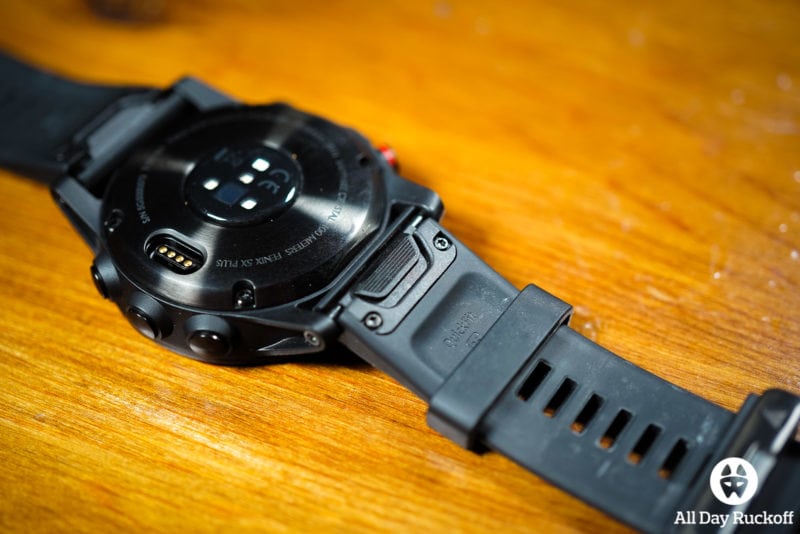

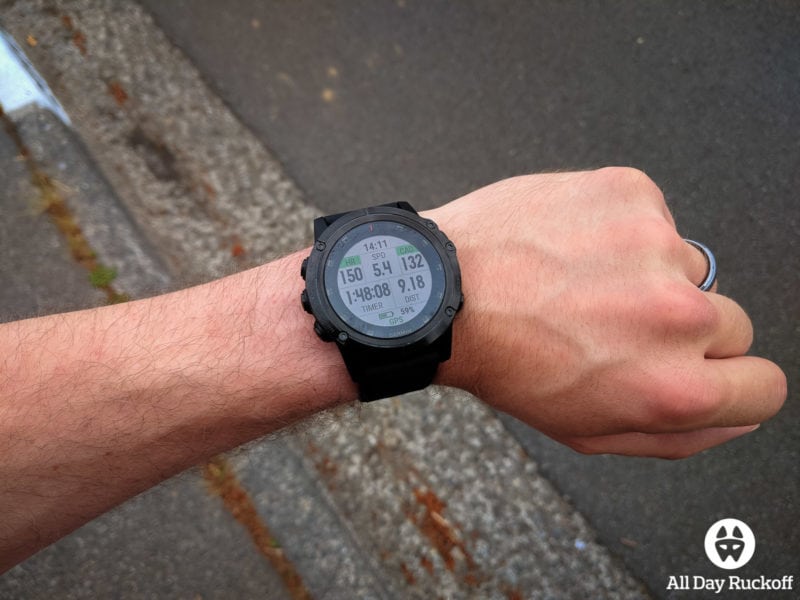


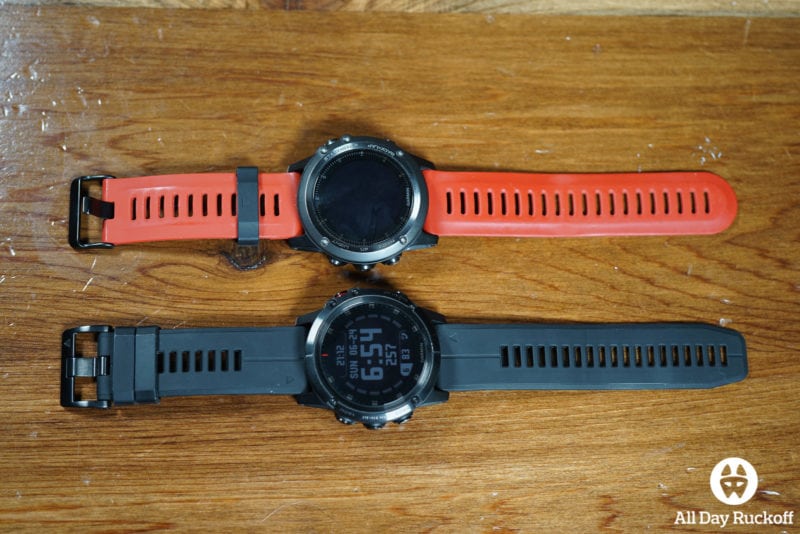
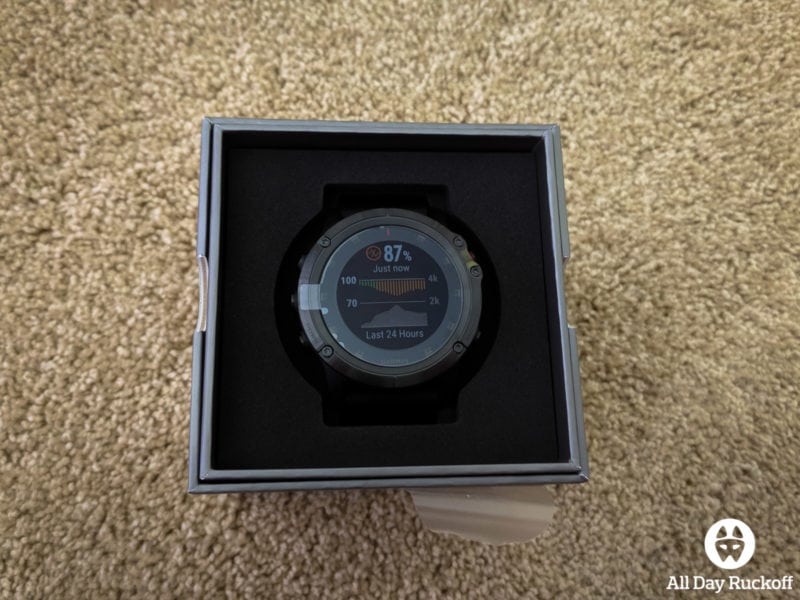

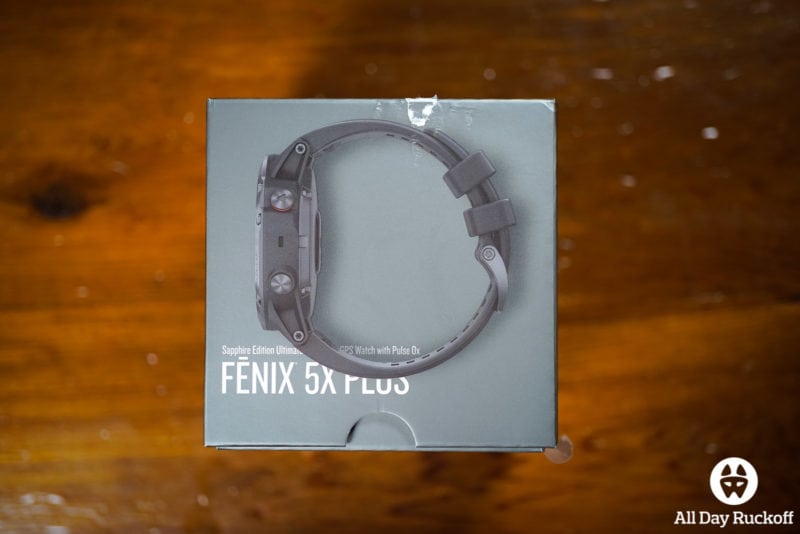

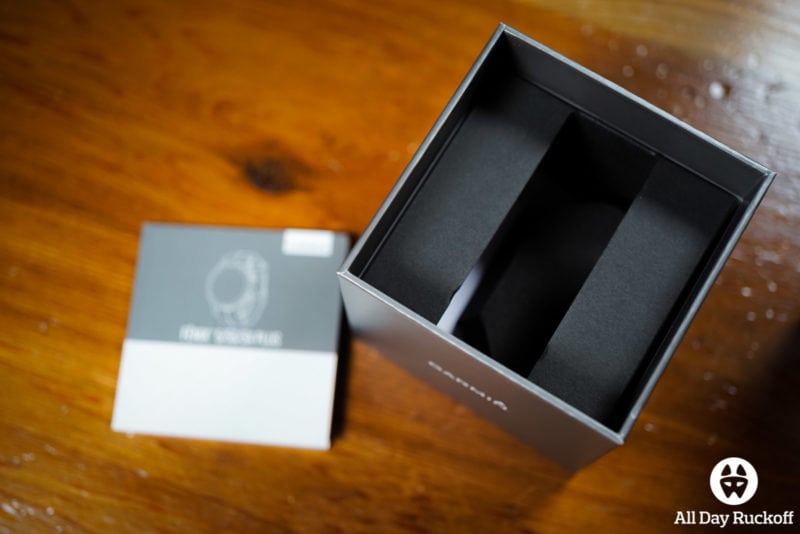
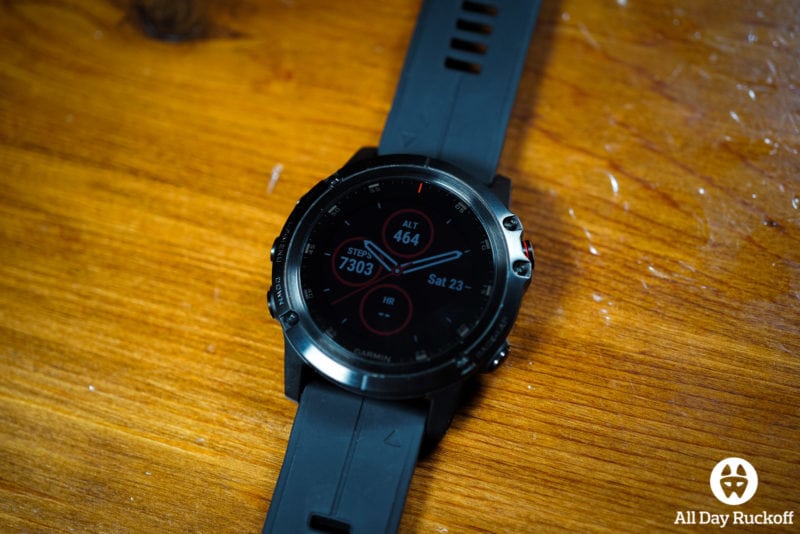

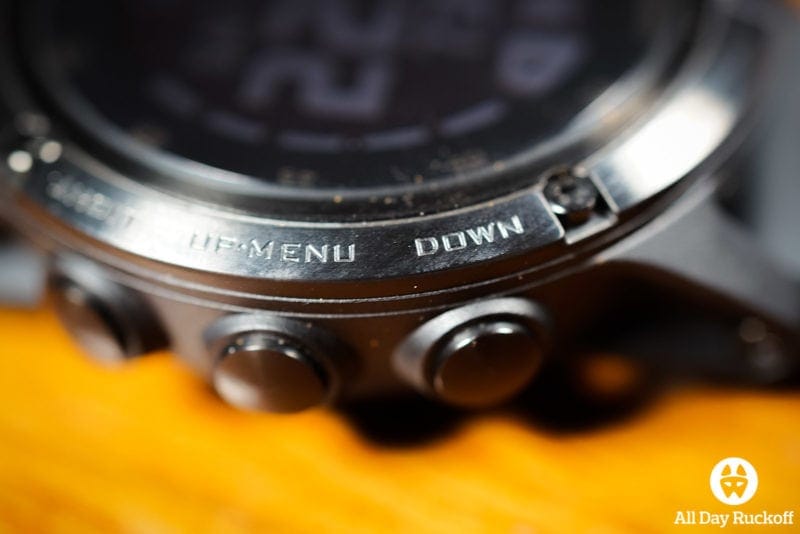
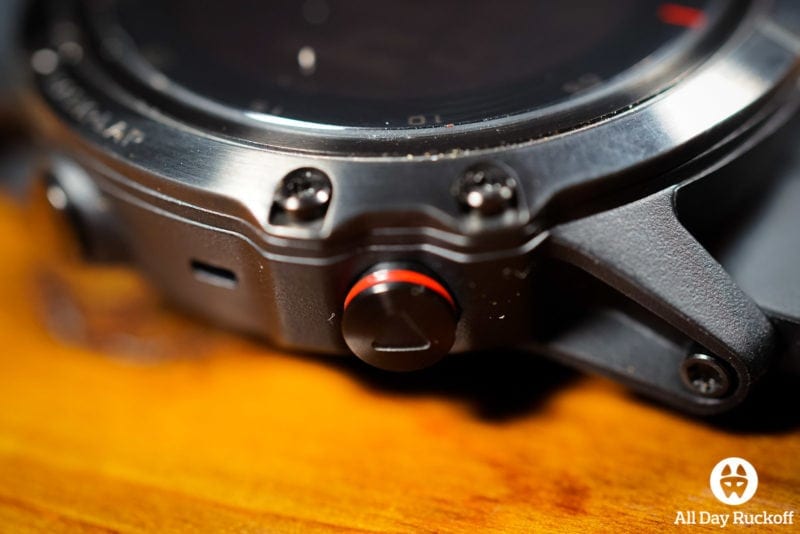


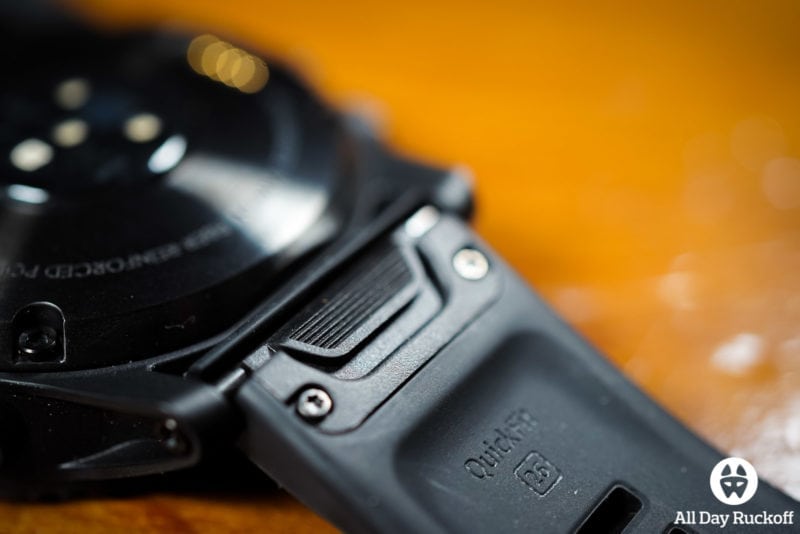
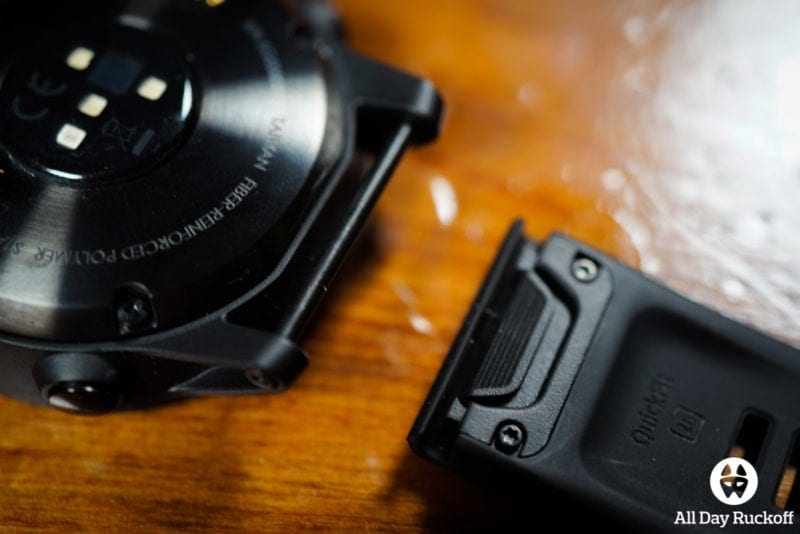





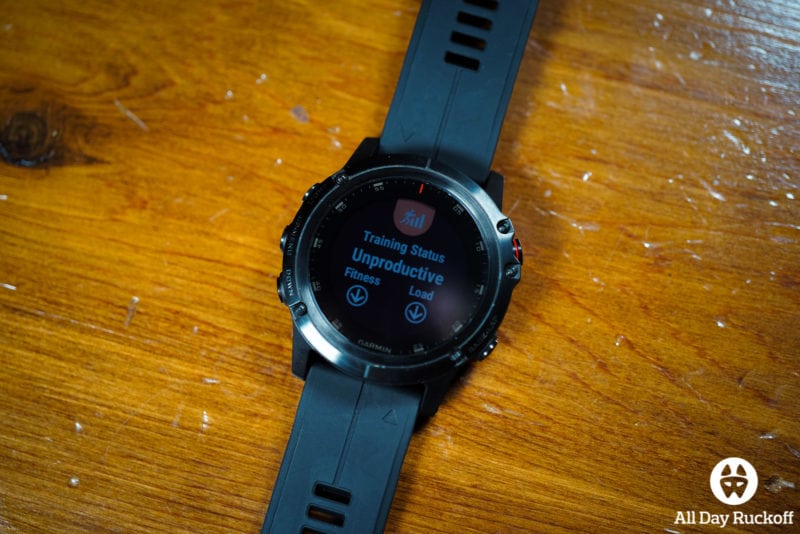
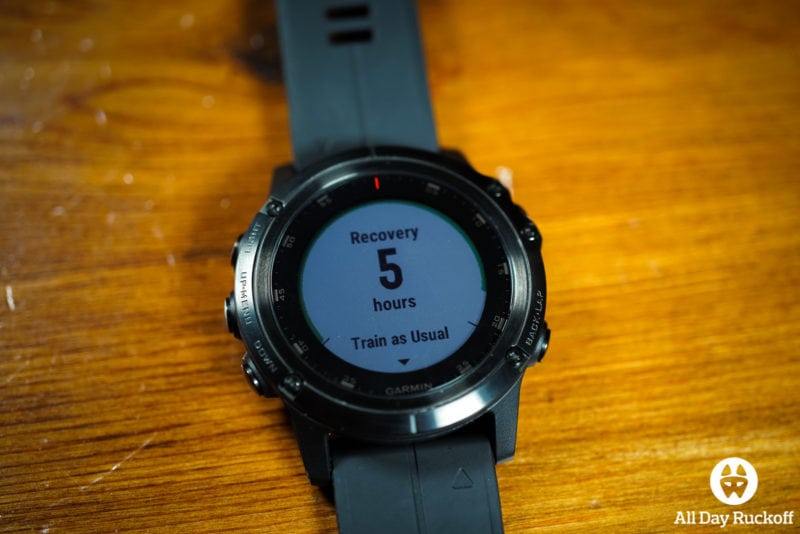
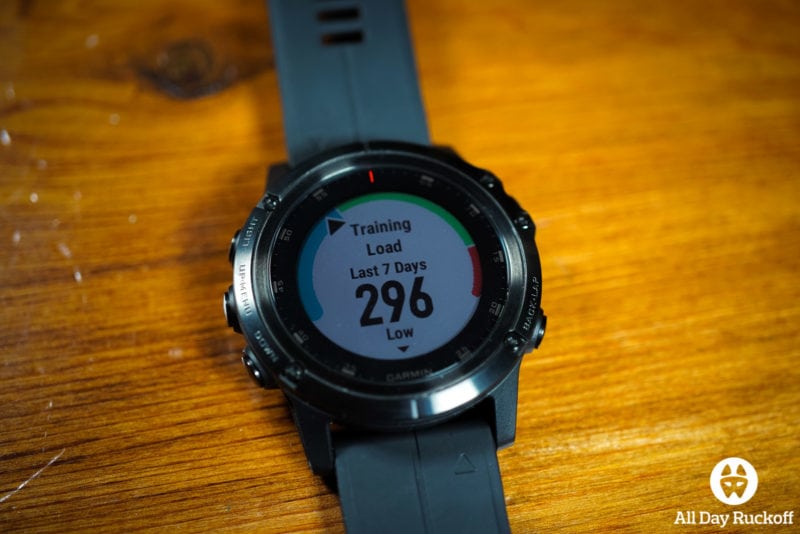
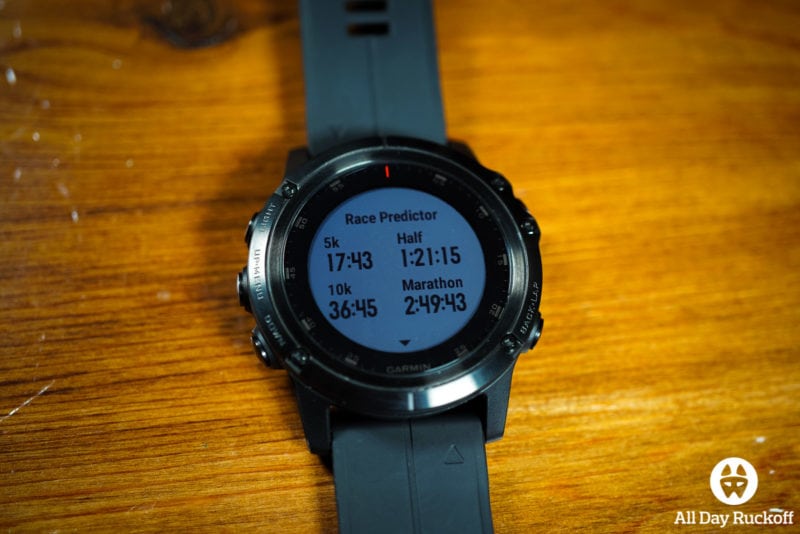
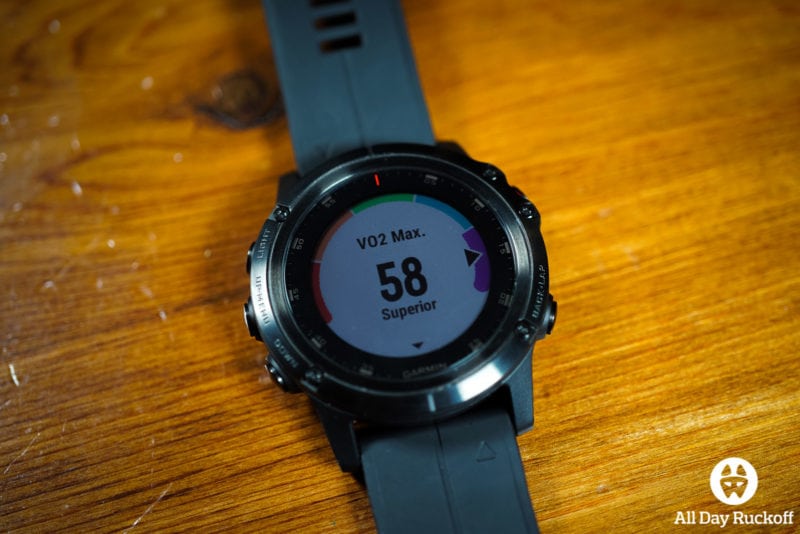
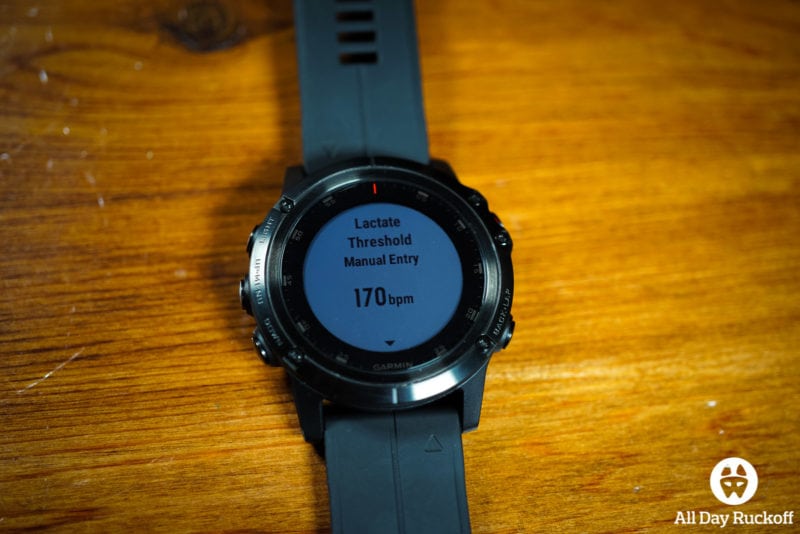

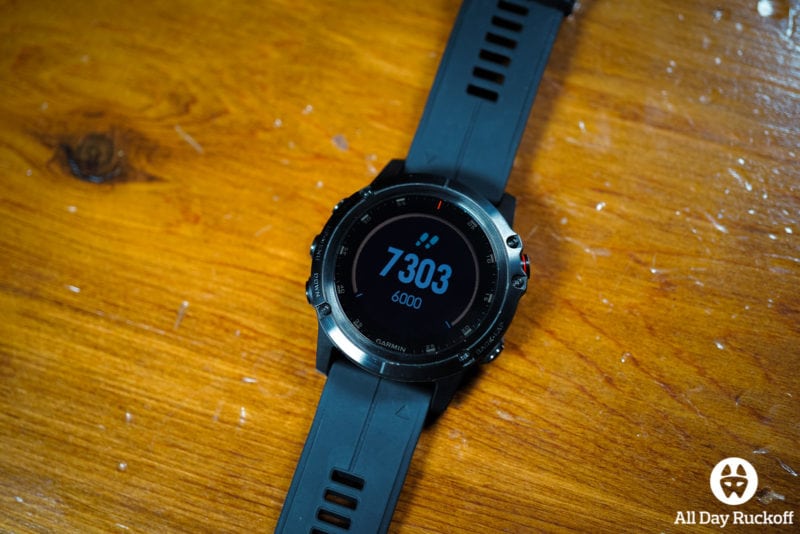




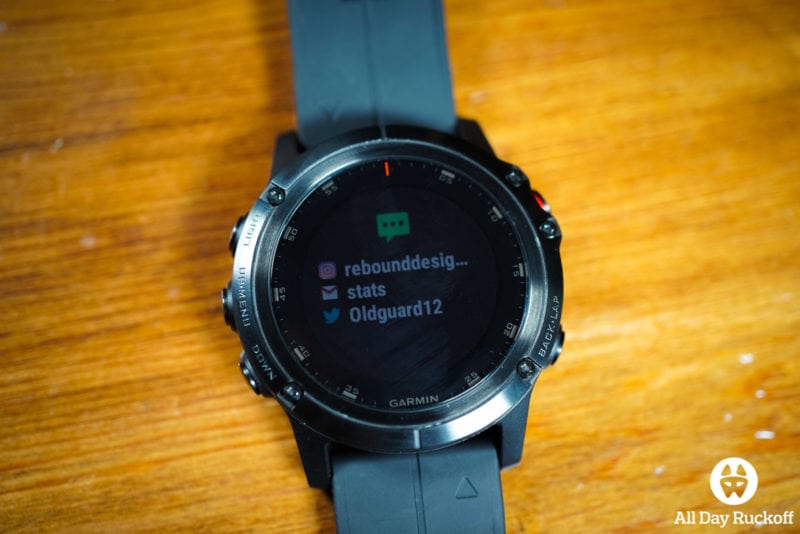
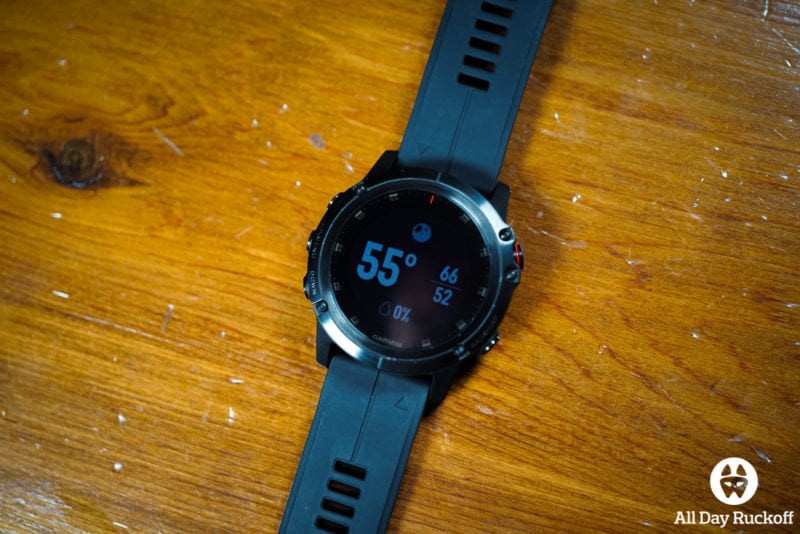
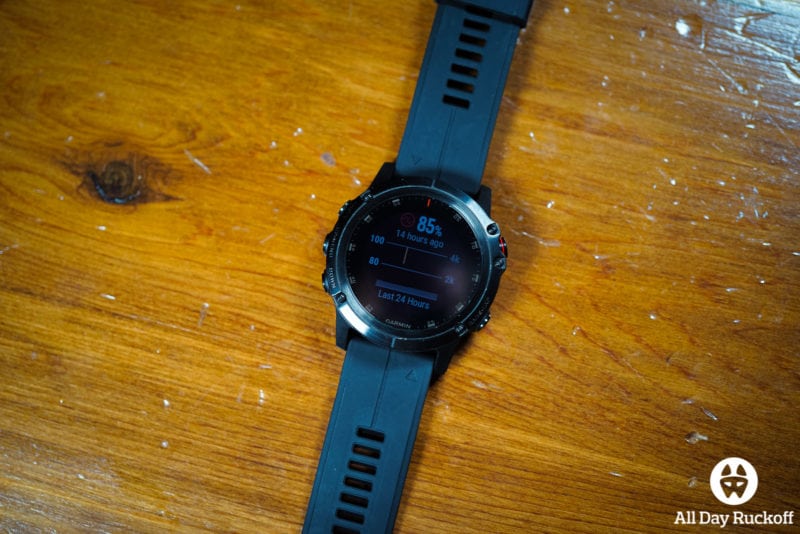


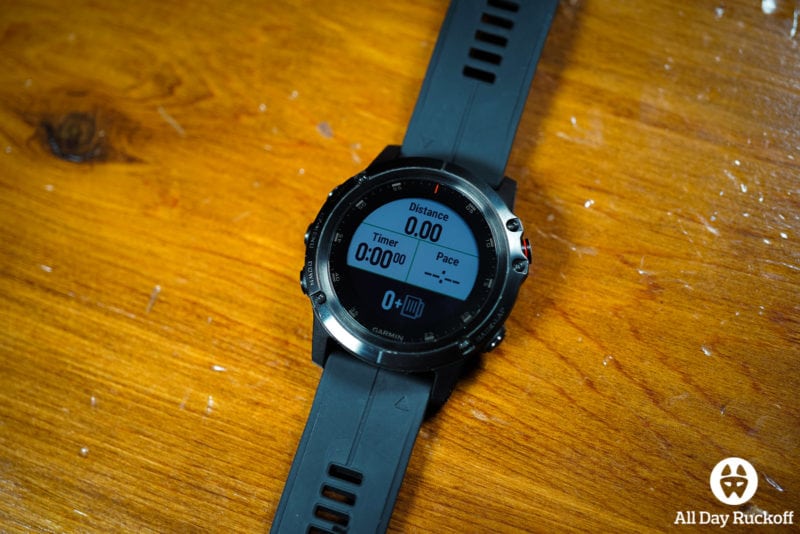

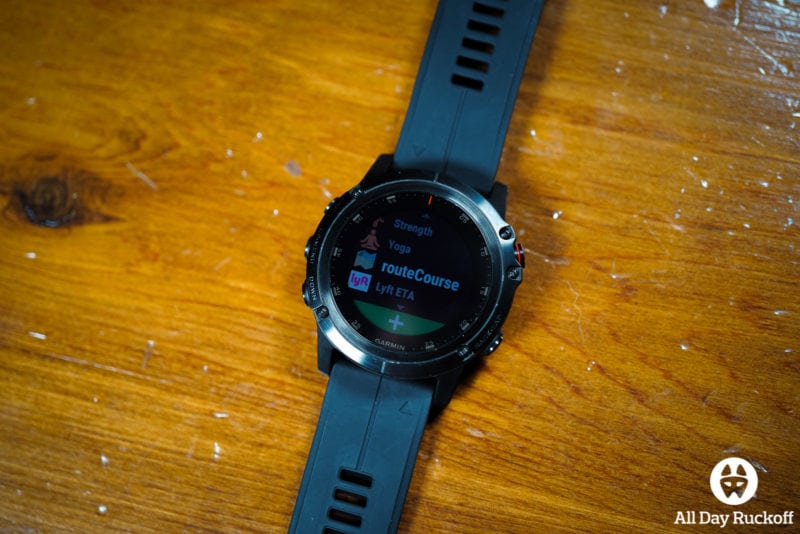

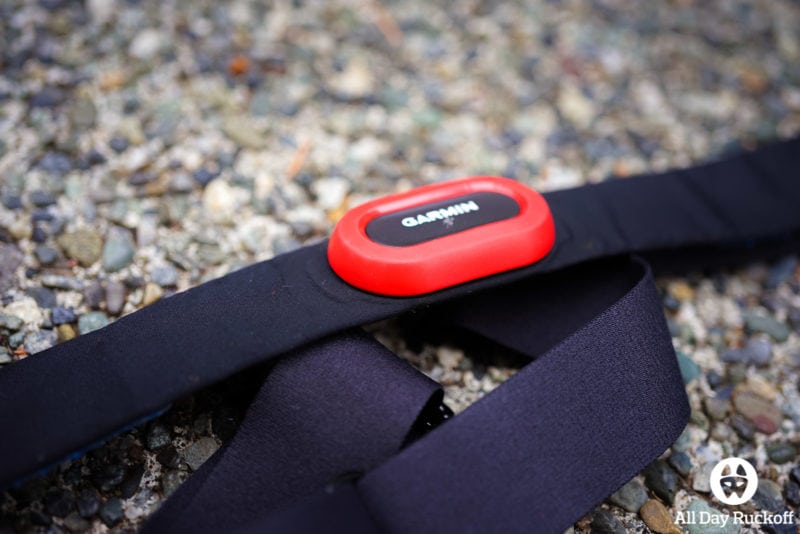

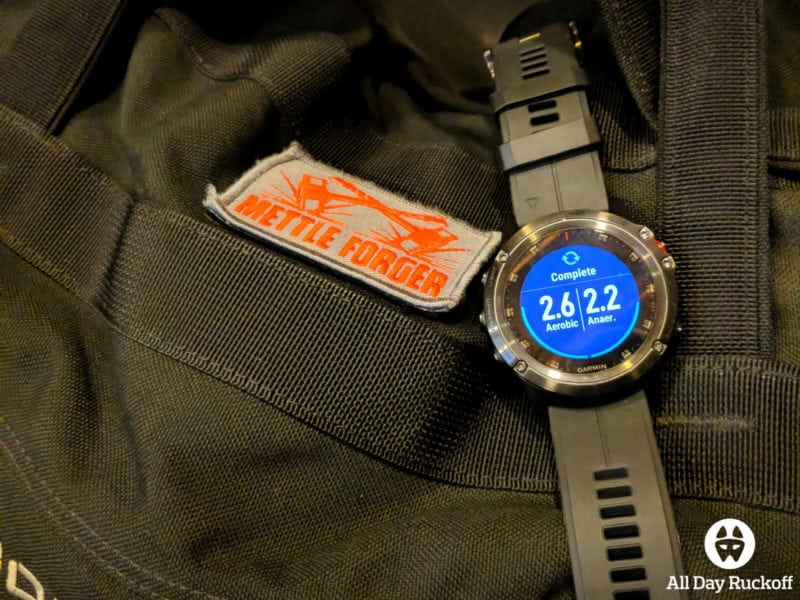




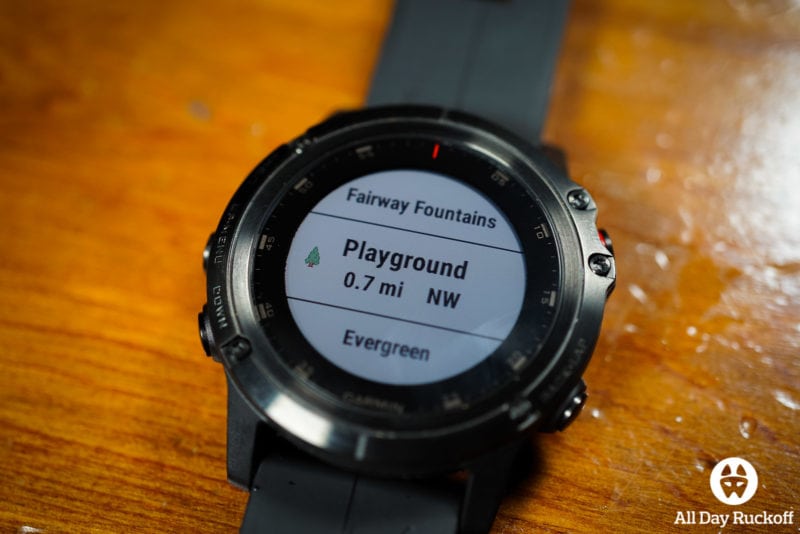
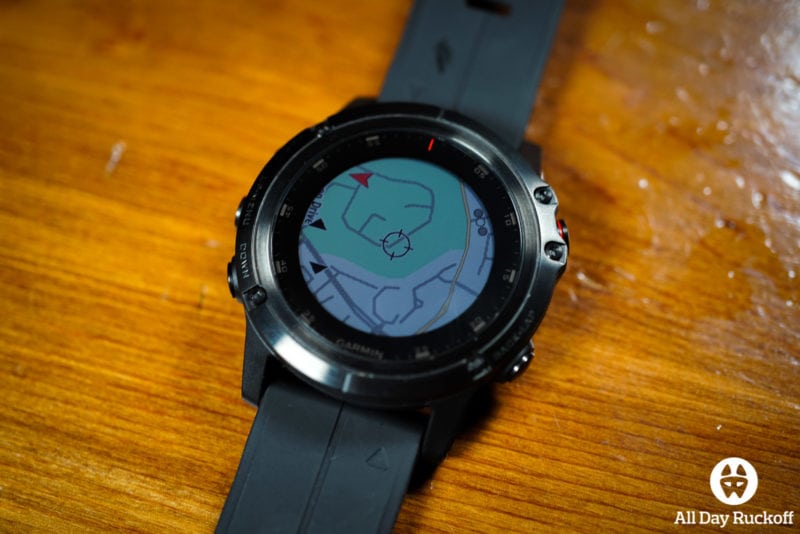
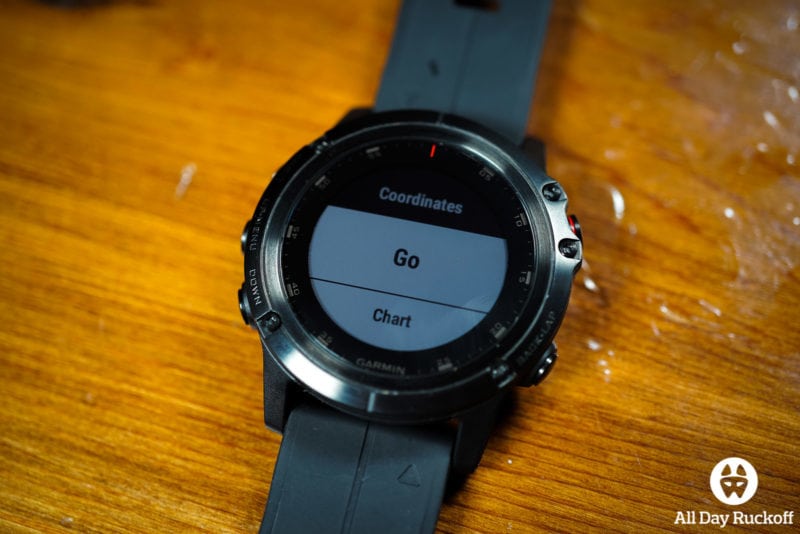
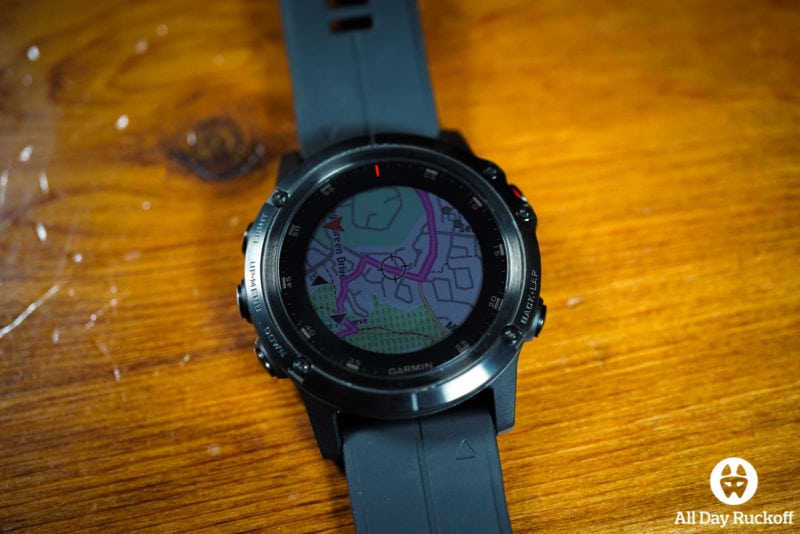
I realy need to know your wrist size and height! I Just have The option to buy on line and I am afraid The fenix 5x plus would be to big. I have skinny arms and thin wrist. But need The larger battery Life from 5x plus! Can you send some photos on your wrist? TKS
Wrist size is 7″ and height is 6’2″. There’s some pictures in this post of the watch on my wrist which I hope helps!
What watch face is that?
I use a couple different ones in the post but I think the most common one is this one.
Great review. DC Rainmaker is an incredible sites for in depth review also.
DCR is probably the most in-depth reviewer for GPS watches on the internet. He writes some of the most detailed content I’ve ever read and I absolutely agree he has an incredible site for reviews!